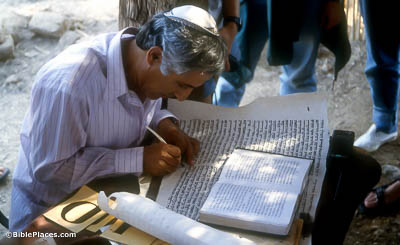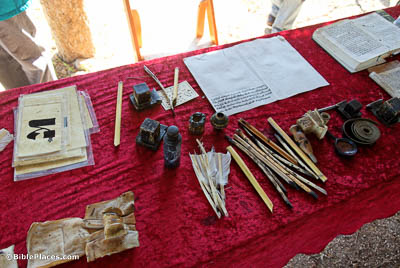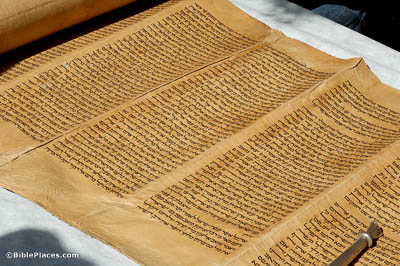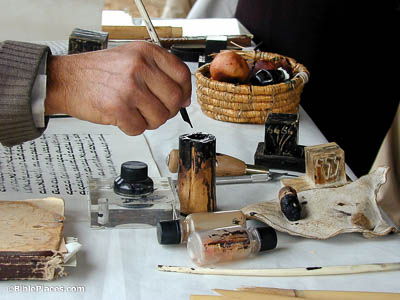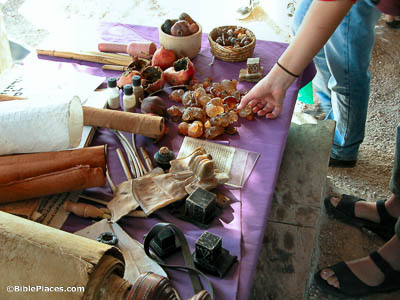In an age before the printing press, the fact that God chose to reveal himself in writing made for an interesting problem—that is, the problem of transmission. In order to multiply copies of Scripture, someone needed to carefully reproduce the text by hand. The kings of Israel were commanded to do just this in order to demonstrate their concern for God’s law. Most of the photographs on this page were taken at the Neot Kedumim Biblical Landscape Reserve.
Deuteronomy 17:18 (KJV) “And it shall be, when he sitteth upon the throne of his kingdom, that he shall write him a copy of this law in a book out of that which is before the priests the Levites.”
